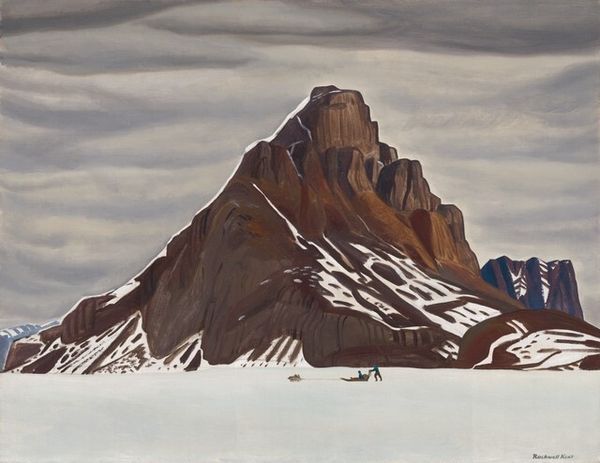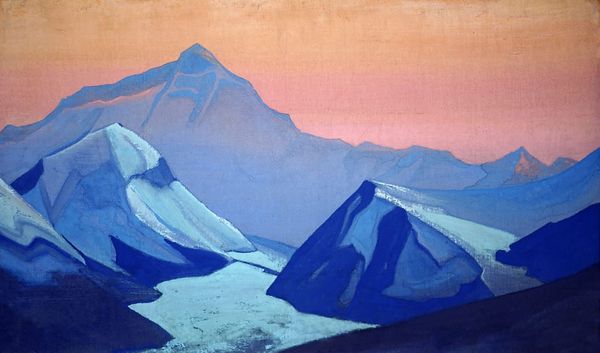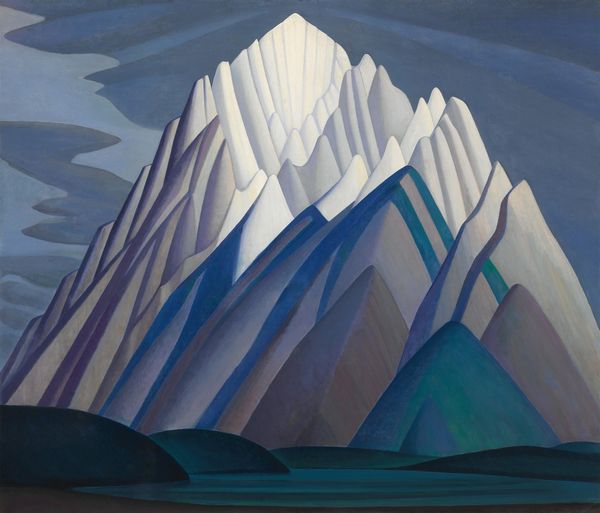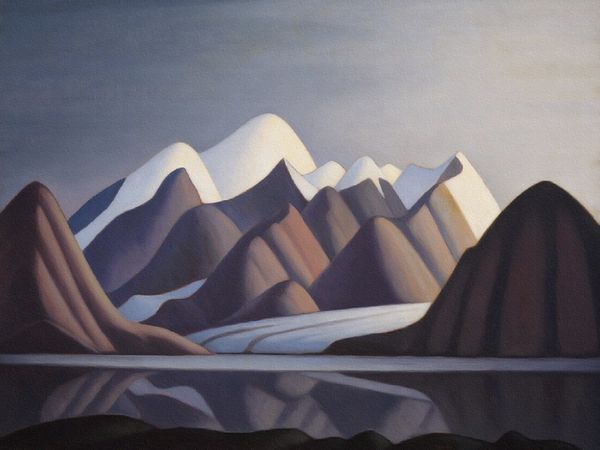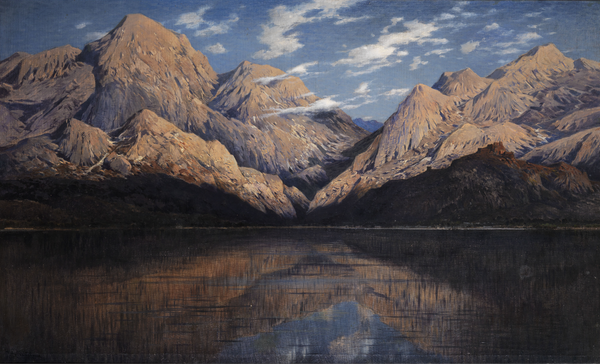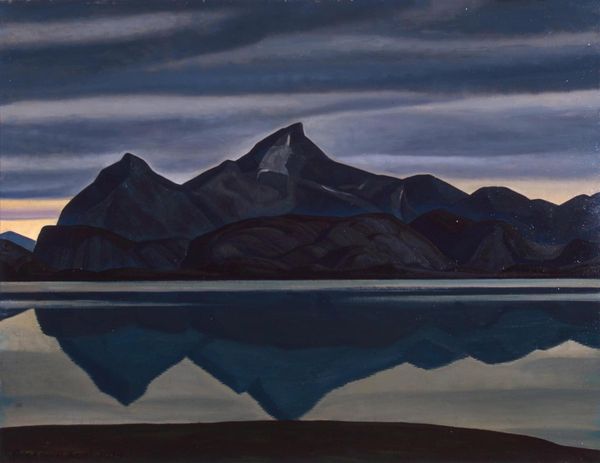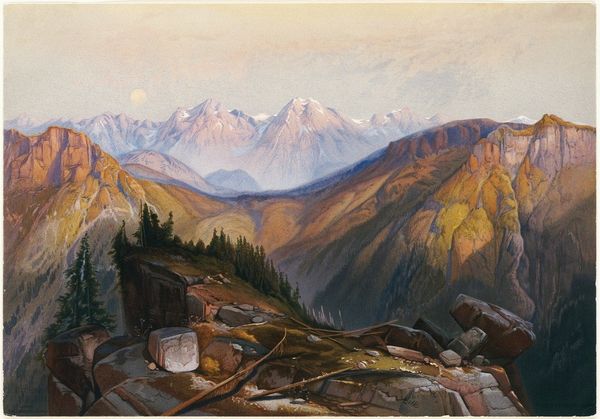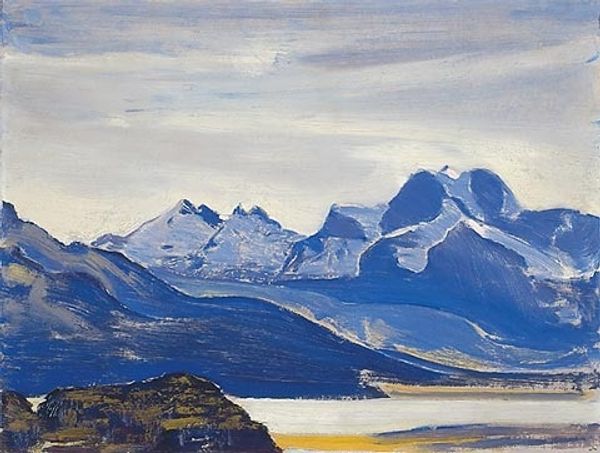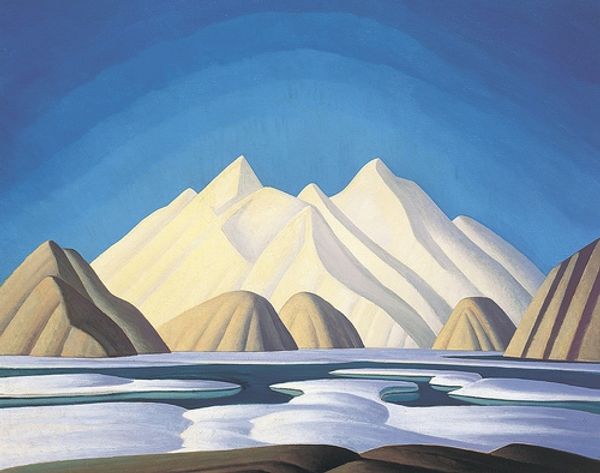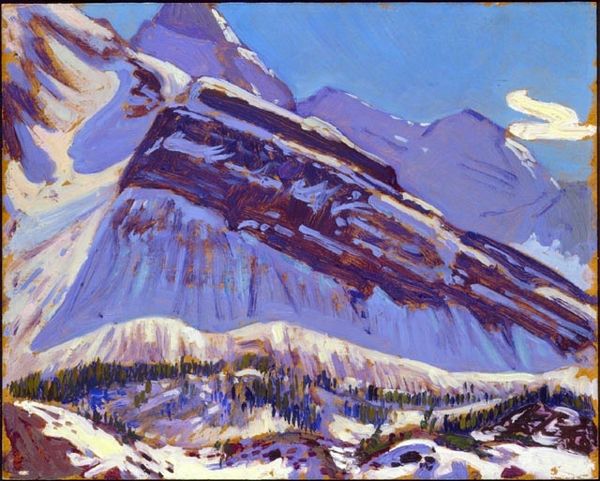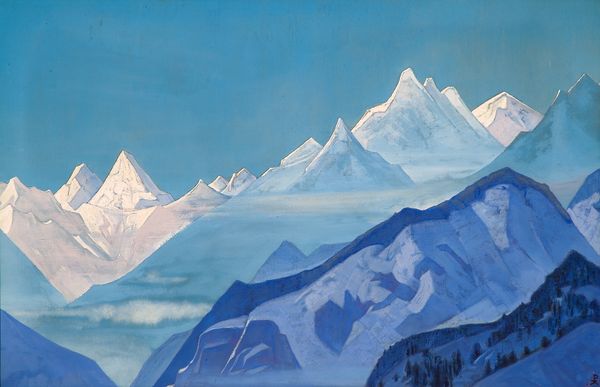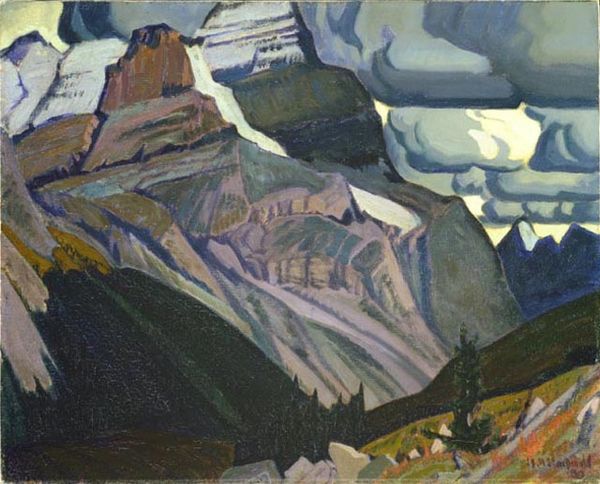
Copyright: Rockwell Kent,Fair Use
Editor: Standing before us is Rockwell Kent’s "Mount Assiniboine, Canadian Rockies," created in 1952. It's an oil painting, and what immediately strikes me is the stark contrast between the cool blues and whites of the mountain against the warm golds of the trees. What do you make of Kent’s choice to depict this scene, particularly in this way? Curator: Kent's landscapes are fascinating from a historical perspective. Remember, he was painting this during the Cold War. While ostensibly a straightforward landscape, "Mount Assiniboine" echoes the American artistic focus on national identity, often glorifying landscapes to reflect the country’s greatness and purity. But there's also Kent's known socialist leanings; showcasing pristine nature subtly critiques industrial expansion and the growing commercialization of American life. The choice of such a remote location becomes almost a political statement, doesn't it? Editor: It’s interesting that you mention the Cold War! So you see it as not just a picture of a pretty mountain, but also as commentary on society and the U.S.'s place in the world. Curator: Precisely. And look at where it's housed – The Hermitage in Russia. This highlights the complex interplay of art, politics, and cultural exchange. Think about the journey this painting has taken – from Kent's easel to potentially being a symbol of cultural diplomacy, particularly given his own somewhat contentious relationship with the U.S. government. Doesn’t this alter your initial understanding? Editor: Definitely. I had just seen it as a beautiful, if somewhat idealized, scene. I hadn’t even considered how its display in Russia adds another layer to its story. I will never look at landscapes quite the same way. Curator: Exactly, Art is always engaged in some sociopolitical dialogue. Considering context helps us look at any work differently.
Comments
No comments
Be the first to comment and join the conversation on the ultimate creative platform.
